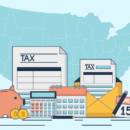In the world of accounting, technology has revolutionised the way we do business. Gone are the days of manual bookkeeping and tedious calculations. Instead, accounting software has streamlined the process, making it faster, more accurate, and more efficient. But is this technology a friend or foe to the accounting profession?
The Pros of Accounting Software
The benefits of autocount accounting software are numerous. Here are just a few:
- Increased Efficiency. Accounting software has made it possible to automate many tasks that used to require manual input. This has reduced the time it takes to complete tasks, allowing accountants to focus on more strategic work.
- Improved Accuracy. Accounting software has also improved the accuracy of financial data. With fewer manual inputs, there is less room for error, and the software can catch mistakes before they become a problem.
- Better Reporting. Accounting software has made it easier to generate reports and analyse financial data. This means that businesses can make more informed decisions based on accurate and up-to-date information.
- Cost Savings. By automating many tasks, autocount accounting software can help businesses save money on labour costs. It can also reduce the need for paper-based processes, which can be expensive and time-consuming.
The Cons of Accounting Software
While there are many benefits to accounting software, there are also some drawbacks. Here are a few to consider:
- Initial Costs. Accounting software can be expensive to implement. There may be licensing fees, hardware costs, and training expenses to consider.
- Learning Curve. Accounting software can be complex, and it may take time to learn how to use it effectively. This can be a challenge for businesses that are used to manual processes.
- Security Risks. Accounting software can be vulnerable to cyber attacks. This means that businesses need to take extra precautions to protect their financial data.
- Dependence on Technology. Accounting software is only as good as the technology it runs on. If there are technical issues, it can disrupt the entire accounting process.
The Future of Accounting Software
As technology continues to evolve, so too will accounting software. Some of the trends that are likely to shape the future of accounting software include artificial intelligence (AI), blockchain technology, and cloud computing.
AI has the potential to revolutionise accounting by automating tasks such as data entry and reconciliation. This can save businesses time and reduce the risk of errors. Blockchain technology, meanwhile, has the potential to improve the security of financial data by providing a tamper-proof ledger of all transactions.
Cloud computing is also likely to play a major role in the future of accounting software. Cloud-based accounting software allows businesses to access their financial data from anywhere, at any time. This can improve collaboration and efficiency, and can also reduce the need for costly hardware and IT support.
Final Verdict: Friend or Foe?
So, is accounting software a friend or foe? The answer is that it depends on how it is used.
If implemented correctly, accounting software can be a valuable tool that increases efficiency, accuracy, and cost savings. However, if not used properly, it can be a burden that adds unnecessary complexity and security risks. Therefore, it is important for businesses to carefully evaluate their needs and choose the right accounting software for their organisation.
Conclusion
Accounting software is a friend to the accounting profession when it is used properly. It can help businesses save time and money, improve accuracy, and make better-informed decisions. However, it is important to consider the costs, learning curve, security risks, and dependence on technology before implementing accounting software. By carefully evaluating these factors, businesses can choose the right accounting software and reap the benefits of this valuable tool.
add more sections









